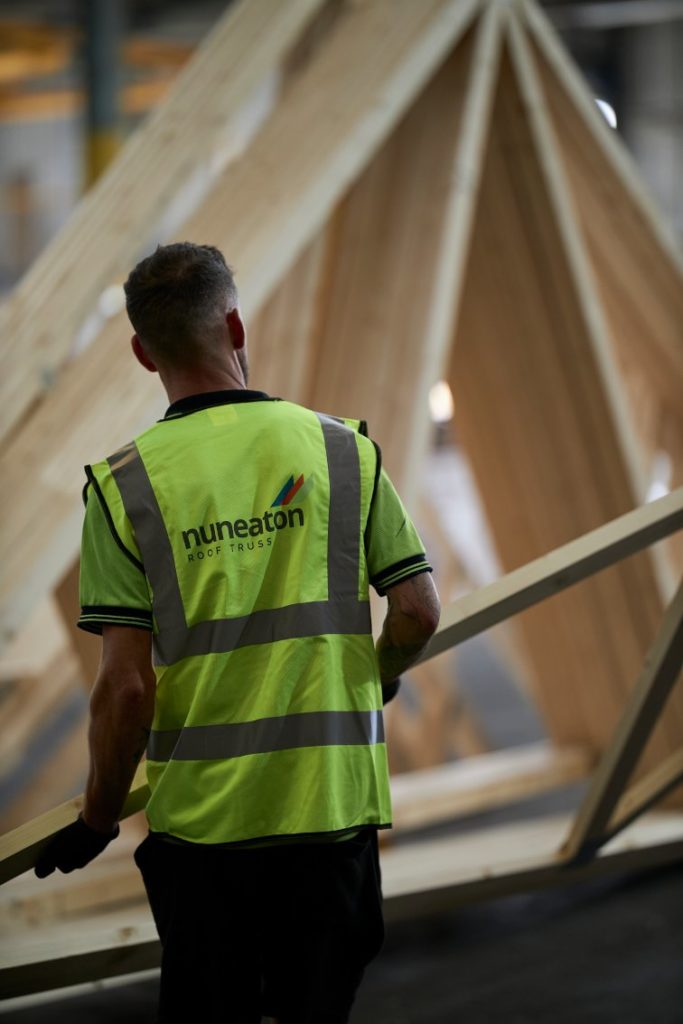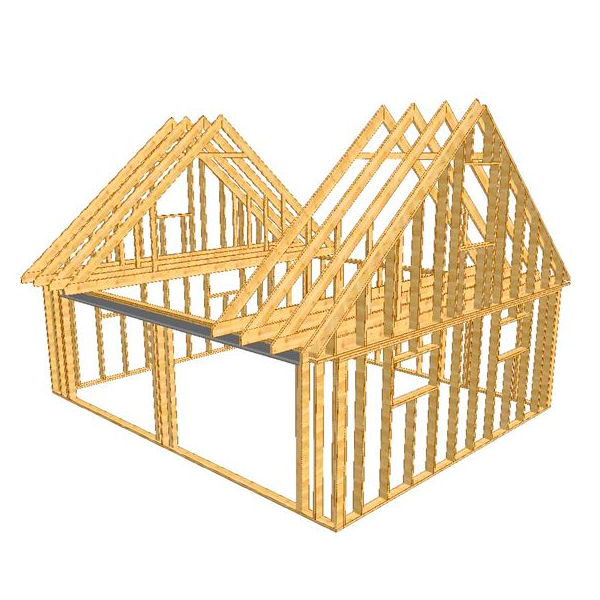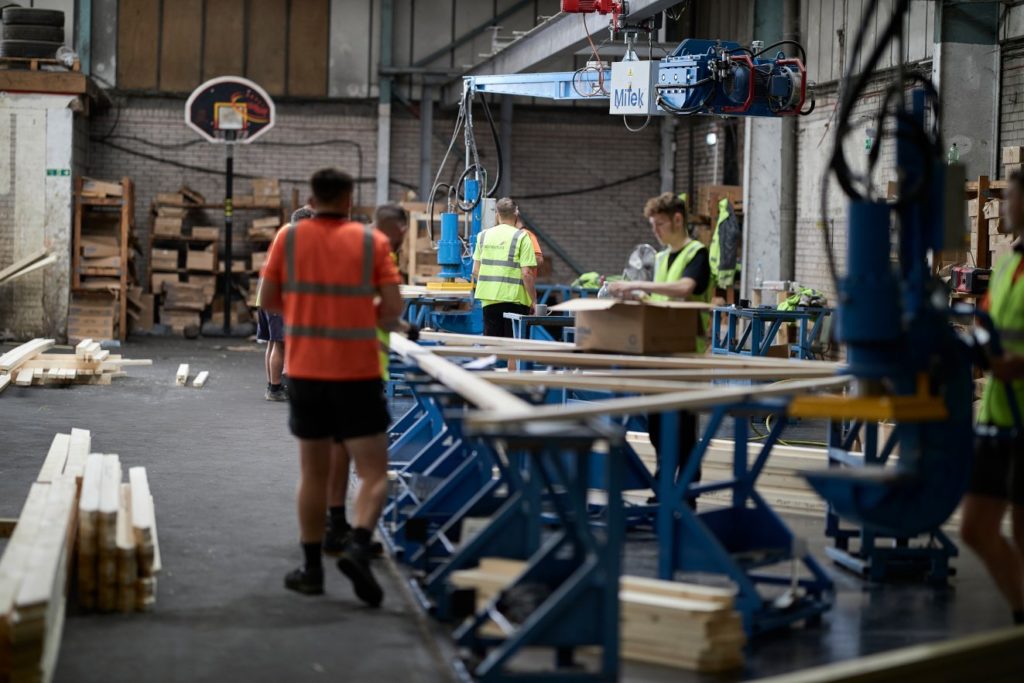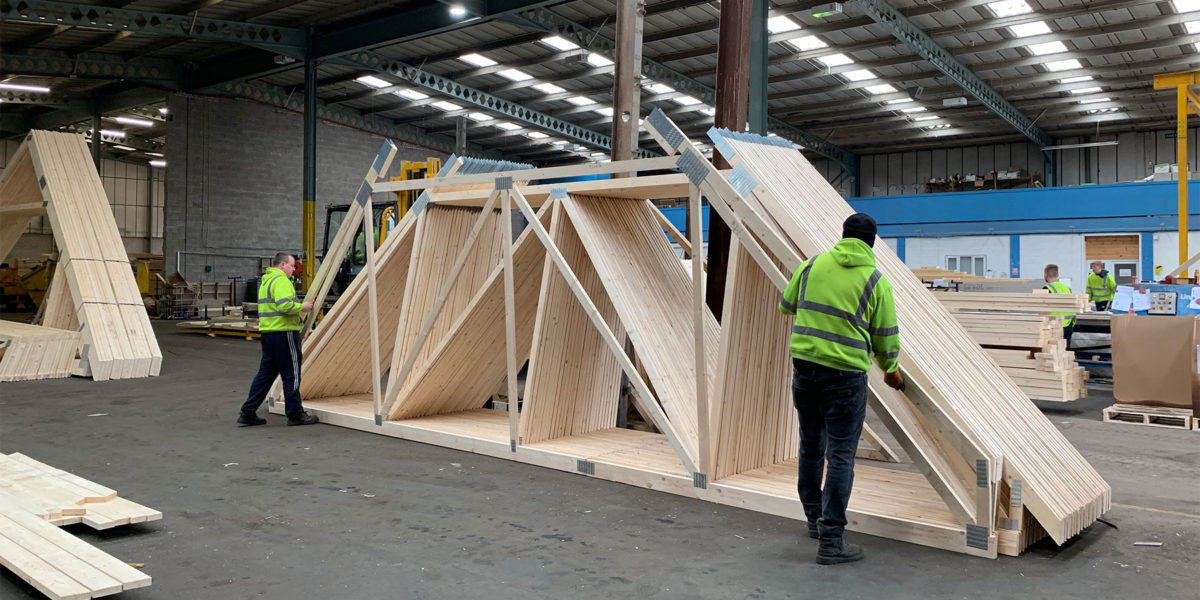More durable, easier to install and better for the environment: trussed rafters are the superior choice. Here are five reasons why.


When it comes to constructing a new roof, builders and homeowners have a choice between using roof trusses, also known as trussed rafters, or traditional site cut rafters. While both options have their own set of pros and cons, there are several reasons why roof trusses are the better choice in most cases.
Understanding the difference between trussed rafters and site cut rafters
First, let’s define what roof trusses and rafters are.
Roof trusses are structural frames that are used to support the roof of a building. They are made up of timber beams that are connected together with metal joints, and they provide a strong and stable support system for the roof.

Rafters, on the other hand, are individual timber beams that run from the ridge of the roof down to the eaves. They are spaced apart and are typically connected to the top of the walls to form a triangular shape, known as a roof pitch.
The trussed rafter advantage
Now, let’s look at some of the key advantages of using roof trusses over rafters:
- Speed of construction.
Roof trusses can be prefabricated off-site, which means that they can be delivered to the construction site ready to be installed. This can significantly reduce the time and labor required to construct the roof, which can save money on the overall project. In contrast, rafters have to be cut, measured, and installed on-site..
- Cost-effectiveness.
Roof trusses can be more cost-effective than rafters in many cases. Because they are prefabricated, they can be mass-produced, which can reduce the cost per unit. In addition, because they are lighter and easier to install than rafters, they reduce labour costs.
- Design flexibility.
Roof trusses offer more design flexibility than rafters. They can be customized to fit the specific requirements of a project, such as the span, pitch, and load-bearing capacity of the roof. This can be especially useful in situations where the roof has a complex design or where the building has unusual dimensions. With rafters, on the other hand, the design options are more limited.
- Energy efficiency.
Roof trusses are sustainable and can improve the energy efficiency of a building. Because they have a larger open space between the top chords, they can provide more insulation and ventilation than rafters, which can help to reduce energy costs.
- Durability.
Roof trusses are also known for their durability. When properly maintained, they can last for decades. Timber is a strong and resilient material that is resistant to rot and decay, and it can withstand extreme weather conditions like high winds and heavy snow loads. In contrast, rafters may be more prone to damage over time due to their exposed location on the roof.
In conclusion, roof trusses offer numerous advantages that make them the superior choice in terms of speed, cost, design flexibility, energy efficiency, and durability.
Why choose Nuneaton Roof Truss?
Nuneaton Roof Truss is the manufacturer of choice for all your truss and engineered timber requirements. Whether you’re planning one house or many, housebuilders, and construction firms all over the UK put their trust in us. If you’re interested in our industry-leading services, click here to get a quote or call us on 02476 327722 to find out how we can support your business and projects.

